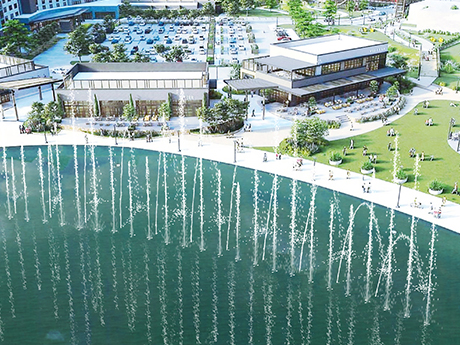By Barry Caylor, vice president of business development, Outside the Lines Inc.
From the rise of online shopping to the pandemic to inflation, retail real estate has weathered a series of challenges in recent years.
Yet, despite being knocked down multiple times, the owners and operators of brick-and-mortar retail keep discovering new ways to adapt to shifting demands and needs, especially as consumers spend more on services and experiences than physical goods.
One way in which retail owners can continue to keep their centers relevant is by leaning into what attributes make them different. By continually supplying the market with fresh concepts and new ways of presenting them, landlords can keep consumers coming back again and again, generating foot traffic and sales for tenants and driving ROI for investors.
In addition, shopping centers can distinguish themselves by providing consumers with something they can’t get anywhere else. As a design-build construction company that specializes in delivering one-of-a-kind water features, rockwork and themed environments, our company has seen retail centers transformed by incorporating unique offerings that consistently draw people in from miles around.
Here are a few ways brick-and-mortar retail owners can stay ahead of the game as the sector continues to evolve:
Offer Compelling Experiences
Experiential retail is what separates in-person from online shopping and affords brick-and-mortar centers a distinct advantage in the marketplace. There is simply no comparison between clicking a few boxes on a screen and visiting a beautifully designed retail center with artfully displayed merchandise that can be tried on and touched.
Adding gourmet food-and-beverage options and a wealth of enjoyable activities to pass the time in between browsing and buying further enhances the overall experience. The first is purely functional, while the second is a feast for the senses.
Amenities that entertain and amaze visitors can be an important part of a retail development’s experiential offerings. For example, at EpicCentral, a 172-acre entertainment destination in the Dallas-Fort Worth metro of Grand Prairie that houses a multitude of retail and entertainment attractions, we recently completed a fountain showcasing a dazzling water show.
By choreographing the show to music and projecting images on a water screen, we created a larger-than-life music video experience. The water feature reflects the magnitude of this Texas destination and matches the development’s central theme of making memorable experiences through iconic attractions.
This is a textbook example of how retail stakeholders can harness the power of compelling experiences to attract visitors and retain them for hours at a time, thereby increasing sales for tenants.
Leverage Superior Service
Online chatbots have nothing on the in-person service that brick-and-mortar retail can provide.
Need to see those curtains in another color? Certainly — and no waiting for a new shipment. Is that coat as warm as it looks? Try it on.
At many stores, sales representatives will fetch a different size for customers as needed so they don’t have to leave the dressing room to hunt for it.
From valet parking to foot massages and coffee, there’s no limit to the services a center can offer its visitors. Retail stakeholders who allow their creative, innovative sides to express themselves can generate numerous ways of pampering and delighting customers while also offering them that personal touch they won’t find online.
These distinctions in service can entice consumers out from behind their screens and into today’s shopping centers, where wonderful surprises await them. They can feel more catered to than by merely clicking the “checkout”
button.
Provide Gathering Spaces
It’s no secret that one of the things people missed most during the pandemic is getting together to socialize with friends and family.
Now that the public health crisis has subsided, many are making up for lost time by seeking out places to gather and enjoy time with those they care about.
Retail owners and operators can provide these central gathering spaces and draw people into their centers. Incorporating these areas can also elevate centers from others their competition in the market and offer residents and visitors another reason to frequent them time and again.
For example, in the second phase of Renaissance at Colony Park, an open-air destination retail center in Ridgeland, Mississippi, our team delivered a dancing show fountain equipped with cutting-edge audio, lighting and effects.
Complementing brand-name and upscale boutiques, cafés and play areas, the water feature serves as the perfect centerpiece for the development’s lifestyle “Main Street” concept and the ideal spot for visitors to spend an afternoon or evening with friends and family.
Conclusion
As retail owners and operators develop strategies for reinventing shopping centers in the face of current challenges, highlighting their unique attributes and offerings to the market will help lead them to success.
By providing compelling experiences, first-class services and central gathering spaces, brick-and-mortar retail can give consumers what they are craving and boost ROI over the long term.
This article originally appeared in the May issue of Texas Real Estate Business magazine.


